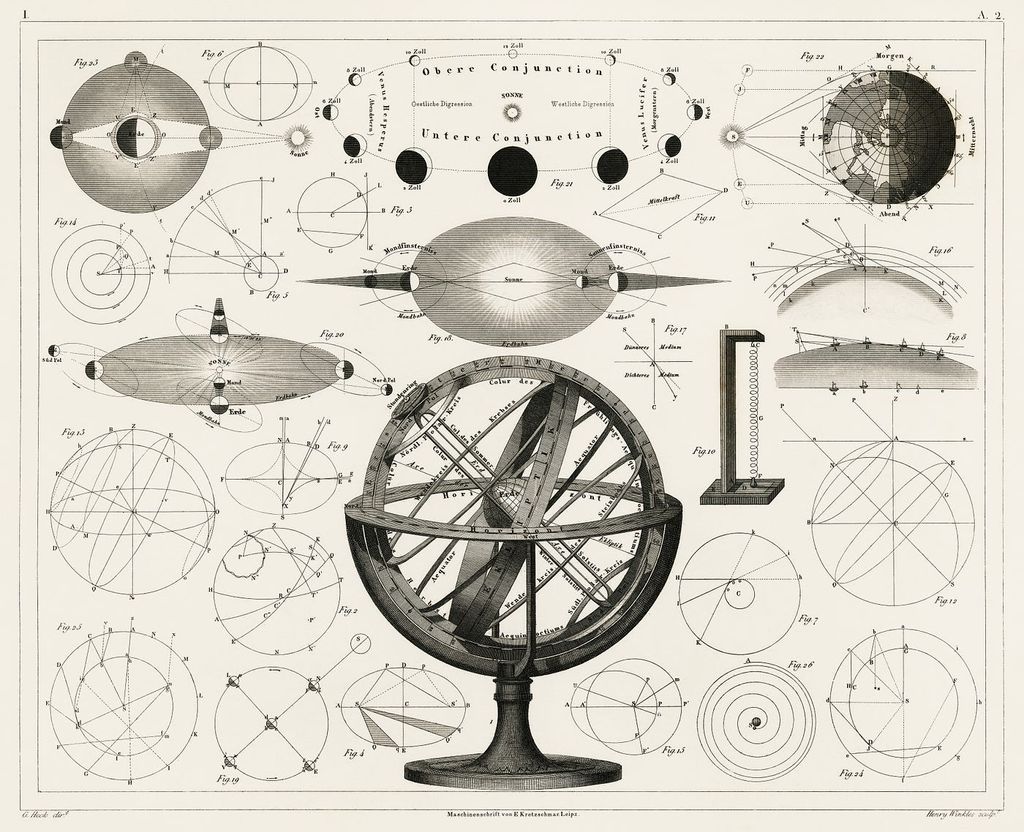Overview
Introduction to the Scientific Revolution
The Scientific Revolution was a period of profound change in human understanding of the natural world. It began in the 16th century and continued into the 18th century, during which English scientists and thinkers challenged traditional beliefs and developed new methods of inquiry. This revolution marked a shift from reliance on ancient authorities and religious doctrine to a reliance on empirical evidence and reason. Scientists such as Galileo Galilei, Francis Bacon, and Isaac Newton played crucial roles in this transformative period, making groundbreaking discoveries and laying the foundation for modern science.
Key Figures and Discoveries
The Scientific Revolution was a period of immense intellectual and scientific advancements that transformed our understanding of the world. During this time, several key figures emerged, making groundbreaking discoveries that challenged existing beliefs and paved the way for new scientific thinking. These figures include Nicolaus Copernicus, Galileo Galilei, and Isaac Newton. Copernicus, with his heliocentric model of the solar system, revolutionized our understanding of the universe and challenged the geocentric model that had been widely accepted for centuries. Galileo’s observations through the telescope further supported Copernicus’ ideas and brought him into conflict with the Catholic Church. Newton, with his laws of motion and theory of universal gravitation, provided a comprehensive framework for understanding the physical world and the motion of celestial bodies. These key figures and their discoveries were instrumental in shaping the Scientific Revolution and laying the foundation for modern science.
Impact on Society
The Scientific Revolution had a profound impact on society, transforming our understanding of the world and revolutionizing various fields of study. One of the key societal impacts was the advancement of recommended designs in architecture and engineering. With the development of new scientific methods and principles, architects and engineers were able to create more efficient and innovative structures. This led to the construction of grand buildings, bridges, and infrastructure that were not only aesthetically pleasing but also functionally superior. The application of scientific knowledge in design allowed for the optimization of materials, structural stability, and energy efficiency. The shift towards evidence-based design resulted in safer and more sustainable structures that could withstand natural disasters and improve the quality of life for individuals and communities. The Scientific Revolution also influenced the emergence of scientific societies and institutions, which fostered collaboration, knowledge sharing, and the dissemination of scientific advancements. These societies provided a platform for scientists, philosophers, and thinkers to exchange ideas, conduct experiments, and publish their findings. The collective efforts of these scientific communities propelled the progress of knowledge and laid the foundation for modern scientific inquiry. In conclusion, the impact of the Scientific Revolution on society was far-reaching, not only transforming our understanding of the world but also revolutionizing various fields, including architecture and engineering.
The Copernican Revolution

Introduction to the Copernican Revolution
The Copernican Revolution, also known as the heliocentric revolution, was a groundbreaking scientific movement that challenged the prevailing geocentric model of the universe. Nicolaus Copernicus, a Polish astronomer, proposed the revolutionary idea that the Sun, not the Earth, was at the center of the solar system. This bold theory was a significant departure from the traditional belief that the Earth was the center of the universe. Copernicus’s heliocentric model sparked intense debate and controversy among scholars and religious authorities of the time. It fundamentally transformed our understanding of the cosmos and laid the foundation for modern astronomy and physics.
Copernicus and Heliocentrism
Nicolaus Copernicus was a Polish astronomer who revolutionized our understanding of the solar system with his heliocentric model. In contrast to the prevailing geocentric model, which placed Earth at the center of the universe, Copernicus proposed that the sun was at the center and that the planets, including Earth, revolved around it. This groundbreaking theory challenged long-held beliefs and sparked a scientific revolution. Copernicus’ work laid the foundation for future astronomers and scientists to explore the cosmos and develop a more accurate understanding of our place in the universe.
One of the key challenges to the geocentric model was the observation of the retrograde motion of planets. In the geocentric model, planets appeared to move backward in the sky at certain times, which was difficult to explain. However, in Copernicus’ heliocentric model, retrograde motion could be easily explained by the relative positions and speeds of the planets. This provided further evidence for the validity of the heliocentric model.
The heliocentric model proposed by Copernicus had significant implications for society at the time. It challenged the authority of the Catholic Church, which had long supported the geocentric model based on religious teachings. The Church initially condemned Copernicus’ ideas as heretical and dangerous. However, over time, the scientific evidence in support of the heliocentric model became overwhelming, and the Church eventually accepted it as the correct explanation of the solar system. This shift in thinking paved the way for a new era of scientific inquiry and the questioning of traditional beliefs and institutions.
Marx vs Malthus overpopulation or senile system: While Copernicus’ work focused primarily on astronomy, his revolutionary ideas about the nature of the universe had broader implications for society. The shift from a geocentric to a heliocentric model challenged the prevailing worldview and opened the door for new ways of thinking about the world. This change in perspective can be compared to the debates between Marx and Malthus over the issue of overpopulation. Marx argued that overpopulation was a result of the capitalist system, which prioritized profit over the well-being of the working class. Malthus, on the other hand, believed that overpopulation was a natural consequence of human reproduction and would lead to scarcity and social unrest. Both perspectives offered different interpretations of the same issue, highlighting the ongoing tension between competing ideologies and the need to critically examine societal systems and structures.
Challenges to the Geocentric Model
The challenges to the geocentric model during the Copernican Revolution were significant and sparked a major shift in our understanding of the universe. Copernicus‘s heliocentric model, which proposed that the Earth and other planets revolve around the Sun, directly contradicted the prevailing belief that the Earth was the center of the universe. This revolutionary idea faced fierce opposition from religious and scientific authorities, who were deeply entrenched in the geocentric view. The Catholic Church, in particular, condemned Copernicus’s theory as heretical and placed his book, De Revolutionibus Orbium Coelestium, on the Index of Forbidden Books. Despite these challenges, Copernicus’s ideas gained traction and laid the foundation for future scientific advancements. Galileo Galilei‘s observations using the newly invented telescope provided further evidence for the heliocentric model, but he too faced persecution from the Church. The Copernican Revolution not only transformed our understanding of the cosmos but also sparked a broader debate about the relationship between science and religion, continuing the fight for free speech and intellectual freedom.
The Newtonian Revolution

Introduction to the Newtonian Revolution
The Newtonian Revolution, also known as the Scientific Revolution, was a groundbreaking period in the history of science. It was during this time that Sir Isaac Newton introduced his three laws of motion, which laid the foundation for classical mechanics. These laws, known as Newton’s Laws of Motion, described the relationship between an object’s motion and the forces acting upon it. Newton’s laws revolutionized the way we understand and predict the behavior of objects in motion. Additionally, Newton’s theory of universal gravitation explained the motion of celestial bodies, such as planets and moons, in a way that was consistent with his laws of motion. This revolutionized our understanding of the laws governing the universe and paved the way for future discoveries in astronomy and physics. The Newtonian Revolution had a profound impact on society, as it provided a new framework for understanding the natural world and sparked a wave of scientific inquiry and innovation. It challenged long-held beliefs and paved the way for advancements in technology, engineering, and other fields. The legacy of the Newtonian Revolution can still be seen today in our understanding of the physical world and in the continued exploration of the laws that govern it.
Newton’s Laws of Motion
Newton’s Laws of Motion revolutionized the way we understand the physical world. These laws, formulated by Sir Isaac Newton in his groundbreaking work Philosophiæ Naturalis Principia Mathematica, provided a comprehensive framework for describing the motion of objects. The first law, known as the law of inertia, states that an object at rest will stay at rest and an object in motion will continue in motion with the same speed and in the same direction unless acted upon by an external force. The second law, often summarized as force equals mass times acceleration (F = ma), quantifies the relationship between force, mass, and acceleration. The third law, known as the law of action and reaction, states that for every action, there is an equal and opposite reaction. These laws laid the foundation for classical mechanics and have been instrumental in the development of numerous technological advancements and scientific discoveries. They continue to be fundamental principles in physics and have shaped our understanding of the universe.
Universal Gravitation and the Laws of Planetary Motion
The Newtonian Revolution brought about a monumental shift in our understanding of the physical world. At the heart of this revolution was Isaac Newton and his groundbreaking laws of motion. Newton’s laws provided a comprehensive framework for describing the behavior of objects in motion, from the smallest particles to the largest celestial bodies. However, it was his discovery of universal gravitation that truly revolutionized our understanding of the cosmos. By proposing that every object in the universe exerts a gravitational force on every other object, Newton was able to explain the motion of the planets and the moon with unprecedented accuracy. This profound insight not only unified the terrestrial and celestial realms but also laid the foundation for modern physics. Newton’s laws of motion and universal gravitation continue to be the bedrock of classical mechanics, forming the basis for countless scientific advancements and technological innovations. Their enduring contributions to world science cannot be overstated.
Conclusion

Legacy of the Scientific Revolution
The Scientific Revolution had a profound and lasting impact on our understanding of the world. It transformed the way we approach scientific inquiry, challenging long-held beliefs and paving the way for new discoveries. Key figures such as Galileo Galilei, Johannes Kepler, and Isaac Newton made groundbreaking contributions to fields like astronomy, physics, and mathematics. Their theories and laws revolutionized our understanding of the laws of motion, gravity, and the structure of the universe. The Scientific Revolution also had a significant influence on society, leading to the development of scientific institutions, the spread of education, and the advancement of technology. It sparked a shift towards empirical observation and experimentation, laying the foundation for modern scientific methods. The legacy of the Scientific Revolution continues to shape our world today, as it remains a cornerstone of scientific thought and inquiry.
Continued Impact on Scientific Inquiry
The Scientific Revolution has had a profound and lasting impact on scientific inquiry, shaping the way we understand the world and driving new discoveries and innovations. One of the key areas where the revolution’s influence is still felt today is in the study of climate change. The extreme heat caused by climate change has become a pressing global issue, and scientists are actively researching its causes, effects, and potential solutions. Through the application of scientific methods and technologies developed during the revolution, researchers are able to collect and analyze vast amounts of data to better understand the complex interactions between the Earth’s atmosphere, oceans, and ecosystems. This knowledge is crucial for developing strategies to mitigate the impacts of climate change and adapt to the changing environment. The Scientific Revolution continues to inspire and guide scientific inquiry, providing a solid foundation for tackling the challenges of our modern world.
Reflection on the Transformation of Understanding
The Scientific Revolution has undoubtedly transformed our understanding of the world in profound ways. It challenged long-held beliefs and introduced new methods of inquiry that continue to shape scientific thought today. One of the key aspects of this transformation is the shift from a geocentric to a heliocentric model of the universe, as proposed by Copernicus during the Copernican Revolution. This revolutionary idea challenged the prevailing notion that the Earth was at the center of the universe and instead placed the Sun at the center. The Copernican Revolution sparked intense debate and skepticism, but it ultimately paved the way for a more accurate understanding of celestial motion. Another significant contribution of the Scientific Revolution was the formulation of Newton’s laws of motion and the concept of universal gravitation. Newton’s laws provided a mathematical framework for describing the behavior of objects in motion and explained the motion of planets and other celestial bodies. This groundbreaking work laid the foundation for modern physics and had a profound impact on our understanding of the natural world. The legacy of the Scientific Revolution extends beyond these specific discoveries and theories. It established a new paradigm of scientific inquiry based on empirical evidence, experimentation, and the use of mathematics. This approach continues to be the cornerstone of scientific research today. The Scientific Revolution also had a profound impact on society, challenging traditional authority and fostering a spirit of intellectual curiosity and skepticism. It paved the way for advancements in technology, medicine, and other fields that have improved the quality of life for millions of people. Overall, the Scientific Revolution represents a monumental shift in our understanding of the world, and its legacy continues to shape scientific inquiry and our broader understanding of the universe.
Avid Writer with invaluable knowledge of Humanity!
Upcoming historian with over 30 million views online.
“You make your own life.”





